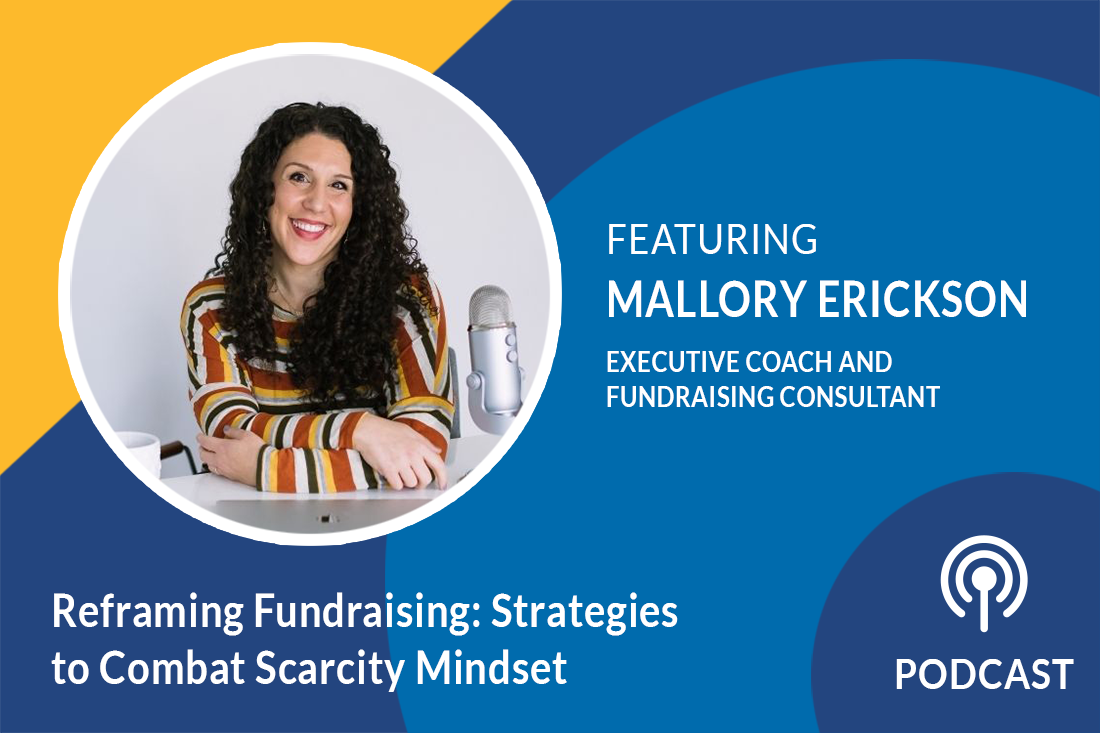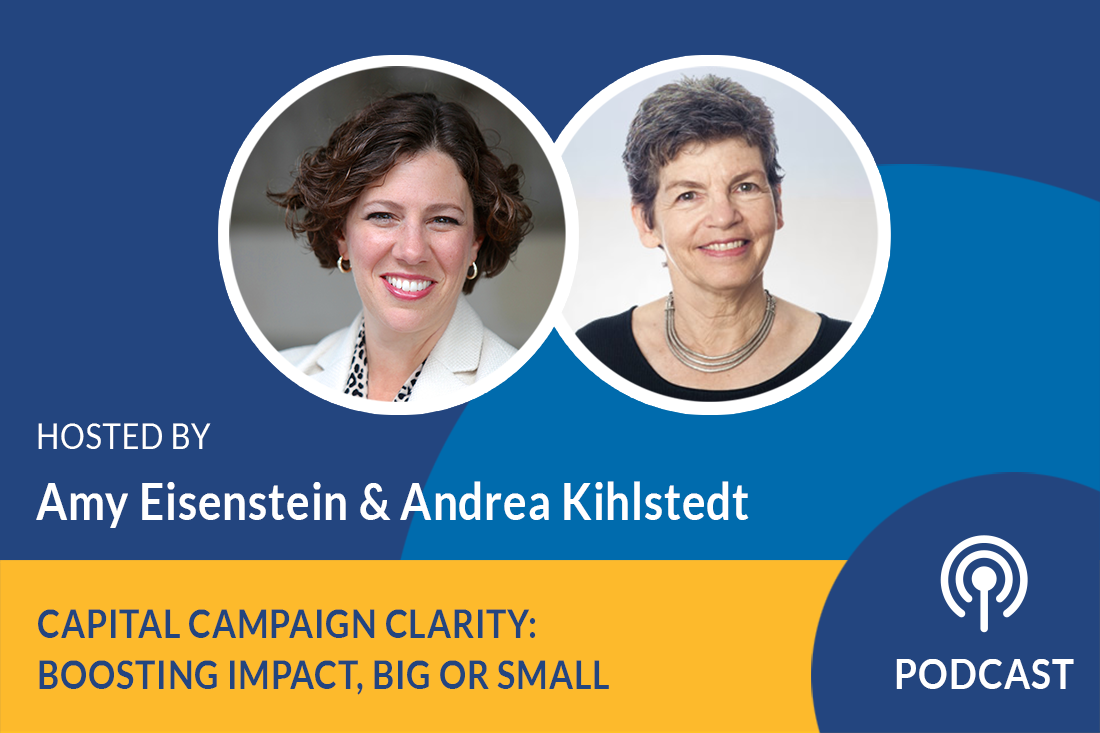Podcast: 3 Easy Ways to Determine Your Campaign Readiness

Season 2, Episode 68
Not sure if you’re ready for a campaign? In this episode, campaign experts Amy Eisenstein and Andrea Kihlstedt share 3 things that you should assess when testing your campaign readiness.
Listen Now:
Amy Eisenstein:
Do you want an easy way to find out if you are ready for a campaign? We’re going to give you three simple things to consider.
Hi, I’m Amy Eisenstein. I’m here with my colleague and co-founder of Capital Campaign Pro, Andrea Kihlstedt. And today we are going to talk about three things that will help you figure out if you are ready for a campaign. Andrea, kick us off.
Andrea Kihlstedt:
Sure. Amy, you and I both have a lot of conversations and strategy sessions with people who run organizations in that, and we want to know if they’re ready for a campaign, right?
Amy Eisenstein:
Yes.
Consideration #1: Your Case for Support
Andrea Kihlstedt:
We want to see if we can help them figure that out, and the first thing I always ask about is, “Well, what’s the case [for support]? Do you know what you want to raise money for? Is it compelling? Is it going to help you move your organization forward, your organization’s mission forward?”
That all fits under the umbrella of case. What’s the case for your campaign?
Amy Eisenstein:
Right. So, if somebody comes to us and says, “We just want more money,” or “We just want to get a little bigger,” or “We just want a safety net,” or “We’re having an anniversary.” We say, “Well, how compelling is any of that to donors?”
Let’s drill down and get much more compelling than that, right?
Andrea Kihlstedt:
Right. I mean, it’s amazing to me how many people come and say to us and say:
“We’re about to have our 20th anniversary, and so we want to raise $20 million.”
Well, honestly, that’s nonsense. Nobody cares about your 20th anniversary. It does provide an opportunity to celebrate, but it’s not a reason in and of itself to do a campaign. You need to know what you’re going to spend that money on and how that’s going to move your mission forward. How you’re going to be able to have a bigger impact once you spend that money. If you can figure that out, then you have a compelling case, and that’s the first of three items.
What’s the second one, Amy?
Consideration #2: Strong Leadership
Amy Eisenstein:
The second item is strong leadership, both staff and volunteers. So, when we are talking to clients and potential clients about their campaigns, we want to know:
- Who’s leading your organization — what is their vision; their work style?
- How long have they been with you?
There’s all sorts of things that we’re looking for both in an executive director and development staff, to see if they’re capable and competent in order to lead a campaign. We’re also going to be looking at board members:
- Is the board on board?
- What role have they played in fundraising?
- Are they excited about the campaign?
What else do we think about when we think about leadership?
Andrea Kihlstedt:
Well, what I’m looking for in leadership are a couple of things. First, all I’m looking for board leadership and executive leadership that is excited about a campaign, that is excited about moving the organization forward. I’m not looking for people who are leaning back. I’m looking for people who are pulling the whole operation forward. I’m looking for that level of energy and commitment.
Campaigns are big and complicated and stressful, and if you don’t have leadership that is pulling the organization in a harness of pulling that big sled forward, it’s very difficult to make a campaign happen. So, you want excited leadership that is keen on making it happen, and that is capable, willing to really do what they say they’re going to do. Willing to lead, literally to lead an organization. If you have a compelling case and that kind of strong leadership, that’s two out of three.
Amy Eisenstein:
I think that —
Andrea Kihlstedt:
That’s the third one. I’m sorry.
Amy Eisenstein:
Yes. Let’s not leave that for one second. I think that that is so important to go back to case because if people say, “We want to do a campaign because we’re having our 25th anniversary.” It’s not exciting, then leadership won’t be excited. And so, when you have a strong case, which sometimes takes a couple of months to come up with, multiple meetings, blue sky thinking, and wrangling.
What will our next 10 or 20 years look like as an organization? It does take time for people to get excited and get on board.
So, it’s not that your board and leadership needs to be excited before you have a strong case. It’s a process.
Andrea Kihlstedt:
That’s such an important point, Amy. I mean, these really are related. If you have a compelling, exciting case, then you’re likely to have excited and committed leadership. And both of those are just so important. It’s very difficult to have a really successful campaign without those.
Amy Eisenstein:
Yeah. I was actually speaking to a new client the other day, and they’re a little unclear on their case, and part of what they hired us to do is help them develop their case. And so, of course, they do have a 25th anniversary coming up in a couple of years, so that was sort of the impetus. But as we were talking just on an initial meeting about teacher recruitment and retention, and strategies for scholarship, and recruiting DEI students, and faculty. You could see the board members lighting up as we dug a little deeper into what they could be raising money for and what the case could be.
And so, I think it’s okay if you don’t quite know what it is, but as you want to move your organization to the next level of program and service and development and into the next decade. As you talk about it, it can get more exciting.
Andrea Kihlstedt:
Yeah. It’s interesting to realize that it’s not the money that’s exciting, although when you have a successful campaign that carries with it a certain amount of excitement by itself. But what is exciting, as you say, Amy, is what the money is going to accomplish. The impact that that campaign is going to have is what lights people up, is what lights donors up.
So, those two things — case and leadership — are just hand-in-hand and in fact, they also tie in, of course, to the third component we want to talk about today, which is donors.
Consideration #3: Donors With Capacity and Inclination
Do you have people who have the capacity, the inclination to give and a belief in your mission and the case, who are going to get on board at a significant level early on? That’s the third component. We have case, leadership, and donors. You’re good on all of those. If you have all of those, then you may not be fully ready, but you’re ready in key and important ways to move into a campaign.
Amy Eisenstein:
That’s right. Now, what do we do when an organization comes to us, and they don’t have yet a robust major gift program? Sometimes we are able to use a campaign to grow their major gift fundraising and to engage key donors. But I think we do need to take a serious look and a campaign is much easier to accomplish when you do have a history of cultivating and soliciting donors for your cause. Maybe not anywhere near at the levels that you’re going to be soliciting them for the campaign, and that’s almost always the case.
The campaign gets donors to think and give gifts bigger than they’ve ever given to your organization before. So that is not the issue, but do you have a consistent base of loyal, dedicated supporters, who do or might have the capacity to give significantly more? And you may or may not know that initially, that may take some digging.
Andrea Kihlstedt:
But you have to be thinking about it early on. I mean, we were having a strategy session with you, and you would say to us, “Well, we’ve never done any fundraising at all. We just have a golf tournament.” Or “We just have an annual bingo night.” We would have to say, “Well, of all the people who come to you for that kind of transactional fundraising. Can you identify 10 people who would be interested in giving philanthropically at a significant level for your campaign?”
It’s one of the reasons we work with organizations to do feasibility studies, is to begin to test that. Do you really have the donors who are going to be able to step up and make gifts of the levels you will need if you’re going to have the kind of campaign you were hoping for?
Summing Up: 3 Ways to Assess Campaign Readiness
Amy Eisenstein:
Excellent. I love the way that you’re able to take a complex topic like determining if you’re ready for a campaign and breaking it down into pretty, fairly simple three things to consider and look at.
- Do you have a strong and compelling case? Or how are you going to develop it?
- Do you have the leadership on board, both staff and board members, and volunteers? Very important to have strong leadership.
- And do you have a donor base that you can cultivate and engage, and develop through your campaign?
So, I hope that was helpful.
Andrea Kihlstedt:
Thank you. Yes, that was good.
Amy Eisenstein:
Excellent! Alright. Thank you so much for joining us. We look forward to seeing you next time. See you soon.



Leave a Comment